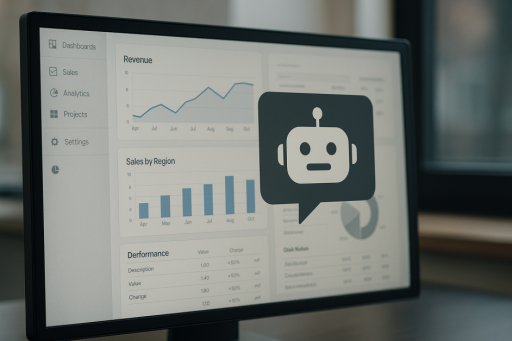
By delivering tools online via subscription model, Software as a Service (SaaS) changed the way enterprises worked. Still, the capabilities were limiting for some, so vertical SaaS added industry-specific functionality. Then came artificial intelligence (AI) and advancements such as robotic process automation (RPA), which would use virtual bots to replicate the actions of people and eliminate rote tasks.
Now, enterprise software is entering a new era with agentic AI, powered by autonomous agents that don’t just mimic humans, they analyze data, make decisions, execute tasks and self-orchestrate workflows in real time. Agentic AI goes far beyond traditional SaaS or RPA. It’s software that acts as a labor force in the digital realm, one that can be integrated across a tech stack and produce measurable business outcomes. This is made possible by individual AI agents drawing from large language models to perform reasoning at a high level.
No prompts from humans are required and each agent can be assigned their own goal as well. One could focus on new sales, another facilitate customer service, a third manage manufacturing changes in real time – the possibilities seem endless. And unlike generative AI models such as ChatGPT, agentic agents don’t just rehash and spit out content, they’ll even crawl through databases and build workflows by themselves to complete a given task.
According to Gartner, approximately a third of software applications in the enterprise will have integrated agentic AI by 2028: The figure was less than a single percent in 2024. In survey results announced by Cloudera in mid-April – based on a poll of 1,484 global IT leaders – 83% felt AI agents were critical for a competitive edge and roughly 60% were afraid they’d fall behind if they didn't pursue adoption this year.
Further, a daunting 96% said they were planning to grow their deployments in the next 12 months, half adding these could be big rollouts across their entire organization.
Bridging the divide
Salesforce CEO, Marc Benioff has called agentic AI “a new labor model, new productivity model, and a new economic model.” Participation in the U.S. labor force remains below even pre-pandemic numbers, and there’s more unfilled jobs today than there are unemployed candidates to take them. A primary goal of AI is to do away with rote tasks, however, at the same time, employees need to be able to produce more. With this in mind, digital labor should be used to enhance a workforce and raise productivity, heighten efficiency and enable organizations to compete.
Agentic AI can bridge the divide between personnel and product in various ways. For instance, a sales executive might use a customer relationship management (CRM) solution to control a large group of existing and potential customers and generate sales. An AI agent could communicate with this base, identify opportunities, bring records up to date, maybe even complete minor sales. If you have that working for a team, daily and around the clock, the hours of manual labor saved, and possibility of sales increases would have a major impact.
The technology is having some growing pains, particularly when it comes to pricing agentic AI. “Per seat” models will likely change to “per task” that are being performed. Agentic AI could also turn into more of a value-based model with AI agents “employed” to tackle a function and produce guaranteed results. Salesforce reported only months ago record product deals for Agentforce, its platform for building, customizing and deploying autonomous agents, yet it recently changed its pricing model to a consumption-based one which ties costs directly to results.
Responsibility and accountability
While much needs to be ironed out with agentic AI, what’s certain is that the way software vendors are selected will need to change. Traditional evaluation has focused mainly on feature sets, but with agentic AI, businesses must weigh such things as a vendor’s history of reliability and responsibility and if they can align with a company’s specific goals.
Accountability should be a concern for decision makers because they’re no longer just buying software. Instead, they’re giving digital intelligence the approval to do things on their behalf, and that can create legal and compliance issues. That said, businesses need to consider their liability, dig deep into the risks, lean into auditability and keep regulatory guidelines at the forefront. Also, organizations must identify who is actually accountable if an AI agent goes rogue, as well as procedures for containing or shutting it down should that happen.
Steps to take
With Agentic AI, many of us are going to see a major change in how we do business. The following are a few actions you can immediately take in order to get the process going.
For starters, reexamine your tech stack with a focus on those rules-based functions an AI agent could possibly eliminate. Consider what software might have interoperability problems or require a new application programming interface. Be sure to avoid siloed decision making – agentic AI can impact many facets of businesses so include leaders from legal, IT and operations. It is also critical to create employee policies for safe and responsible use of agents, too.
You have to understand the work capacity of an AI agent, along with the complexity it can eliminate. This means you’ll also need to reconsider software cost models and the return on investment they can deliver. This is about volume and efficiency, so seat, license and subscription costs are no longer the criteria to use.
Agentic AI will greatly impact SaaS but won’t entirely replace it. We’ll see a collaboration of technologies, guided by a goal of augmenting workforces. Still, enterprises will fundamentally need to change how they work with software. Agentic AI is here, and the faster you understand what it can do and put it into practice, the more you’ll cement your future position and success.
The post Business Software and the Urgency of Adopting Agentic AI appeared first on Unite.AI.

